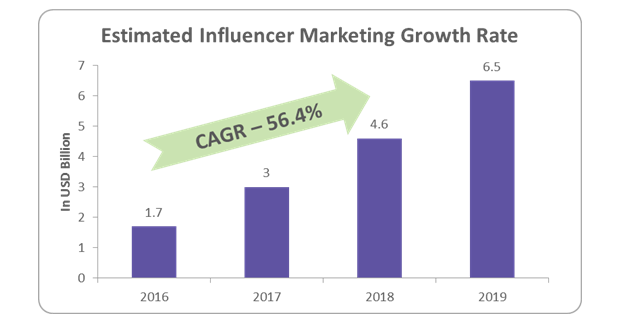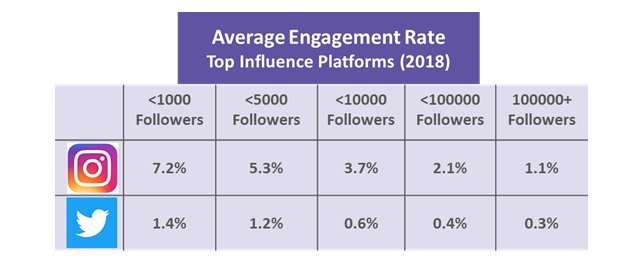
How Social Validation is helping Brand Validation?


This article explores the new trend in the advertising space on influencer marketing and its impact on buyers while promoting their brand. It discusses the pros and cons of social validation and the precautionary measures that buyers could take to help their brand grow.
What is Influencer Marketing?
Social media has changed the dynamics of advertising and there is an explosion of brand content in the digital space. Influencer marketing is a hybrid form of indirect advertising where a celebrity or social influencer with a fan/audience base reaches out to consumers from their personal page to endorse a brand.
Market Overview: Influence of Influencer Marketing
The trend of influencer marketing began to grow from 2014 as digital channels expanded and became a preferred channel for advertising due to their reach and a quick response rate from consumers. Digital channels also created a cost saving opportunity for marketers as a single campaign could be aired online and the word of mouth alone could spread the campaign beyond the boundaries of the marketer, churning out more revenue with fewer efforts.
This is how influencer marketing started. The marketer could leverage the audience of the influencer to reach out to the masses by paying only a premium to the celebrity or influencer promoting the brand.
This also created an opportunity for companies and apps to begin streamlining the process for both brands and influencers. According to a research conducted, in 2015, there were 190 influencer marketing platforms and agencies. This grew to 335 in 2016, 420 in 2017, and 740 in 2018, which shows the influence and impact of this strategy on consumers.
In the U.S. and Canada alone, there has been an 83 percent YoY growth in influencer marketing spend. Google, Facebook, Instagram, YouTube, and Twitter are the main contributors to the growth of influencer marketing. It is reported that Google searches for the term “influencer marketing” increased by 325 percent from 2015 (3900 searches/month) to 2018 (61000/month). Instagram users targeting influence marketing and their usage increased by 10 times in the last 5 years.
Among all the platforms, Instagram has the highest engagement rate followed by Twitter. Instagram is a current trending platform and more influencers prefer to share their content for immediate response and wider reach, which is leveraged by buyers. Influencer marketing is more suited for B2C buyers than B2B buyers. Research proves that 69 percent of the total spend on influencer marketing is by B2C buyers due to the direct exposure to the end consumers. According to Blue Corona, Facebook (89 percent), LinkedIn (81 percent), and Twitter (75 percent) are the three most-used social media channels by B2B marketers, while only 33 percent of B2B businesses use Instagram mainly due to a lower reliance of business customers on social media for purchasing.
Why do advertisers use influencer marketing to promote their brand?
-
Cost: Cost is the major attraction for buyers. The cost of creating an advertisement involves scripting, location, hiring talent, production, and execution. However, the reach of the campaign is diminished even in the digital space due to an overload of content from competitors. Further, consumers have an additional option to block ads, which again acts as a barrier to reach the target audience. Interest towards ads also varies by consumers, so it is always difficult to tap the majority.
-
Influencers create trust: The influencers mostly engaged are celebrities or subject-matter experts who interact with customers, explain the pros and cons of the product, engage consumers based on their followers’ interests, and create a trust factor, which converts directly into a purchase decision.
-
Ensure effective reach: According to Forrester, an average consumer, on average, engages with 11.4 pieces of content before making a purchase decision. Customers prefer to get reassurance from others who have used the product or talk about its appropriate usage. In this scenario, influencer programs are easy to scale through different social media channels and there is a higher probability that the consumer finds the content themselves before there is an attempt to reach them.
-
Higher Responsiveness: A digital clip, banner ad, or TV ad is a one-way communication with the consumer and there is a low scope for understanding consumer behavior. However, the reach of the influencer can be easily evaluated from the increasing or decreasing rate of followers, comments, and responses to the content posted by the influencer as well as the purchases from the clicks redirected from the description box. This makes it easier to track the real-time data of the influence created by the endorser through the influencer marketing activity.
What factors should the buyer watch for while investing in an influencer marketing campaign?
-
Fake followers and fraud engagements: Research highlights that 15 percent of buyers’ investments on influencer marketing are lost in fraud engagements, costing $1.3 billion annually. Though top influencers with more than a million followers in the B2C market earn $250,000 per social media post, there is a loss of almost $38,000 due to fraud and inflated follower counts. This is the first thing that buyers need to look out for in capturing maximum returns from influencers. Engagement with agencies that track the credibility of the influencer is the most effective action plan as it will help to evaluate fake vs credible follows and analyze whether the brand is associated with the right influencer for their product line.
-
Simple mistakes can be costly: The influencer becomes the indirect face of the brand and every post by the influencer about the brand or otherwise becomes an indirect channel for the brand. So, it is important that the marketer is careful about choosing an influencer and reviews the content before it is posted. It would be ideal to post the content directly from the marketer as sponsored content to ensure that the brand takes ownership of the specific post and has no ownership over the other personal posts by the influencer.
-
No mechanism to measure the success rate of influencers: Though a brand has general search and click options that show how many consumers visit the page of the influencer, due to the vast reach, there is still no streamlined ROI measurement technique that can equate the spend on influencer marketing directly to sales conversions. Though new agencies are coming up with solutions, it might be a slow process for marketers to churn the benefits of measuring ROI.
Conclusion
Marketing is a dynamic space and as brands mature, more and more advertising, promotional, and influential channels are opening up, creating huge opportunities for buyers to increase their brand positioning. Though it would be wiser to spread their spend across different activities, it is also important for marketers to ensure that every avenue is explored wisely keeping in mind the reach as well as the negative impacts.
In the influencer marketing space, hiring agencies that can validate the credibility of the influencer brought onboard followed by putting in place contract agreements and content monitoring would be the first step towards engagement. This will ensure that all the content is posted with agency approval. Further, constant tracking on fraud accounts and engagements can be established to check the appropriate reach and evaluate the influencer’s penetration among the target audience.
Reference
-
https://influencermarketinghub.com/influencer-marketing-2019-benchmark-report/
-
https://influencermarketinghub.com/9-mind-blowing-influencer-marketing-statistics/
Related Insights:
View All
Get more stories like this
Subscirbe for more news,updates and insights from Beroe









Y